What is DOGTOOTH About? Lantihimos’ Shocking Drama Explained
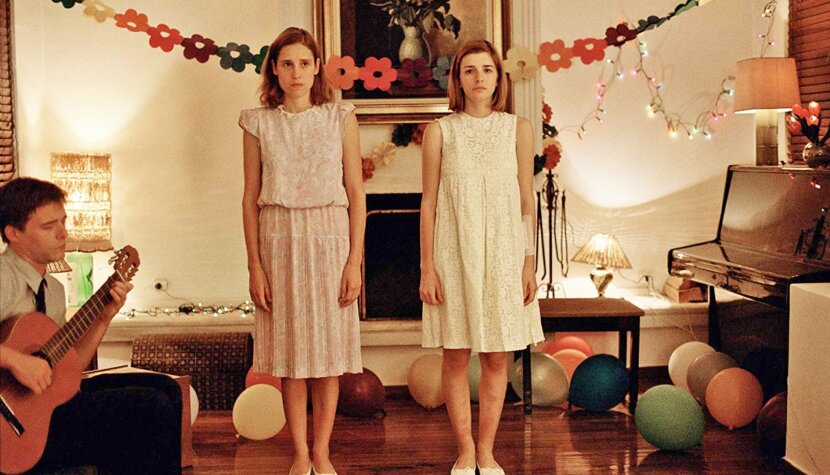
Today, we primarily associate the Greek director with Poor Things, The Favourite, as well as The Lobster from three years prior—grotesque films laced with social paranoia that brought a breath of fresh air to the rigid dramaturgy dominating the mainstream.
However, his journey to international (read: English-speaking) recognition began in the somewhat exotic realm of his native cinematography, where he became known as one of the representatives of the local new wave. It was on the Peloponnesian Peninsula years ago that Lanthimos made a splash with Dogtooth—his first major film, and simultaneously his most shocking and radical. Although it will soon be a fifteen years since the premiere of this work, the question remains open—what is Dogtooth actually about?

The situation presented by Lanthimos is very simple—a five-person family lives in a villa with a spacious garden, consisting of a father, a mother, and three teenage children: two sisters and a brother. At first glance, the existence of these unnamed characters seems like the ordinary life of a wealthy Greek family, but it gradually becomes clear that the situation is far from normal. For the children, the boundaries of the property literally define the horizon of their known world, beyond which lies a reality inaccessible to them. Only the father, who works as a director at a factory, has the right to leave the property. The rest of the family spends all their days at home, where a systematic and precise training of the siblings takes place. This upbringing, based on strict rules and a precise system of rewards and punishments, is a process of comprehensive indoctrination, primarily through the creation of a worldview, one of whose fundamental parts is the concept of the titular “dogtooth”—its loss is said to signify reaching maturity and granting the right to go outside.
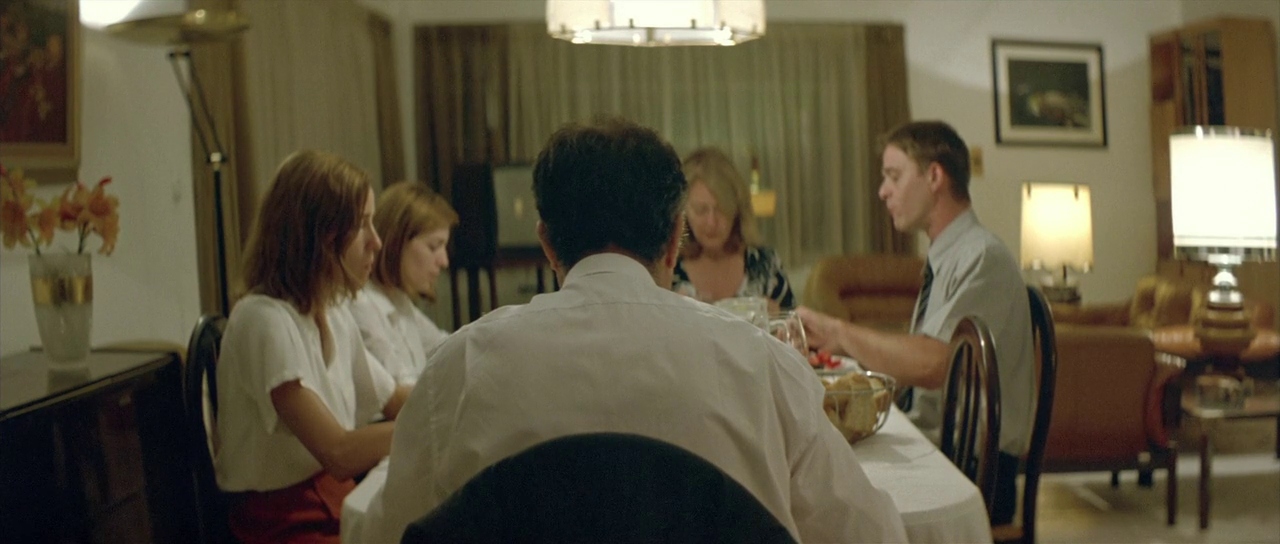
Lanthimos performs a cold, almost surgically dispassionate vivisection of family life—a method that would become a foundation of his style—constructing a story full of anxiety and subversion from static, clinically clean frames that overlay emotional and psychological situations onto actors who perform in a Bressonian style (without expression). His focus is on the training of the children, which becomes increasingly grotesque and terrifying, while never averting his gaze (or the camera) from the horrifying scenes of sexual violence, psychological terror, and authoritarian creation of an absurd view of reality taking place inside the tidy home. These shocking elements of violence, embedded in the series of mechanical activities and naturalized in the oppressive relationship as obvious and necessary, blend into the depicted world as integral parts, prompting instinctive reactions from the audience, compelling them to engage in uncomfortable reflections.
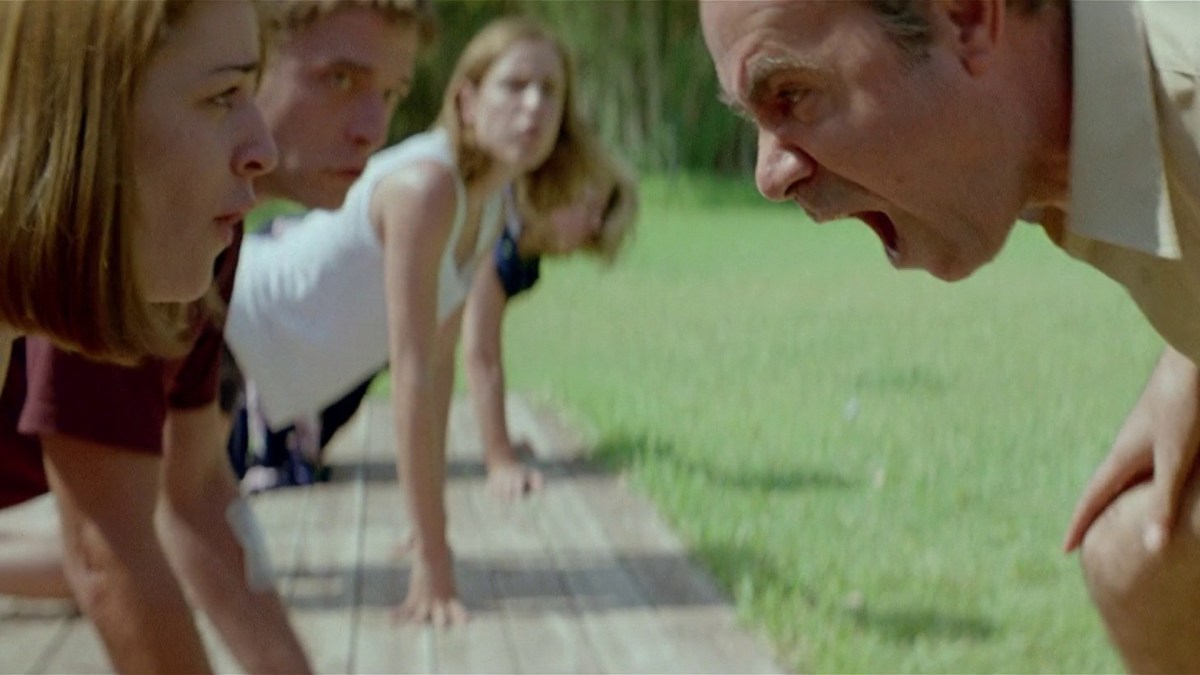
Dogtooth opens up several fundamental interpretative threads. Foremost is the story of pathological family relationships, distorted in the name of an extremely misunderstood idea of parental protection and the shaping of offspring by parents. In Lanthimos’s film, the family, and only the family, literally defines the horizon of the world, representing the only accessible social space for the children and maintaining parental authority through the abuse of the educational role, distorting the reality perceived by the children. This is the fundamental layer of the story, which, within the aesthetics of shock and discomfort, takes the form of a specific critique of the institution of the family. From this thematic line, established as the main motif of the film, derive the subsidiary motifs of sexual oppression and the problematic nature of socialization. From the combination of these three elements, interconnected in a cruel mechanism of shaping subordinate individuals and reproducing the system, a dominant, sinister metaphor emerges in the Greek film—the Lanthimosian family in Dogtooth is a hyperbolic reflection of social mechanisms, centered around the “basic social unit.” At this point, in all its exaggeration, the film becomes something uncomfortably close.
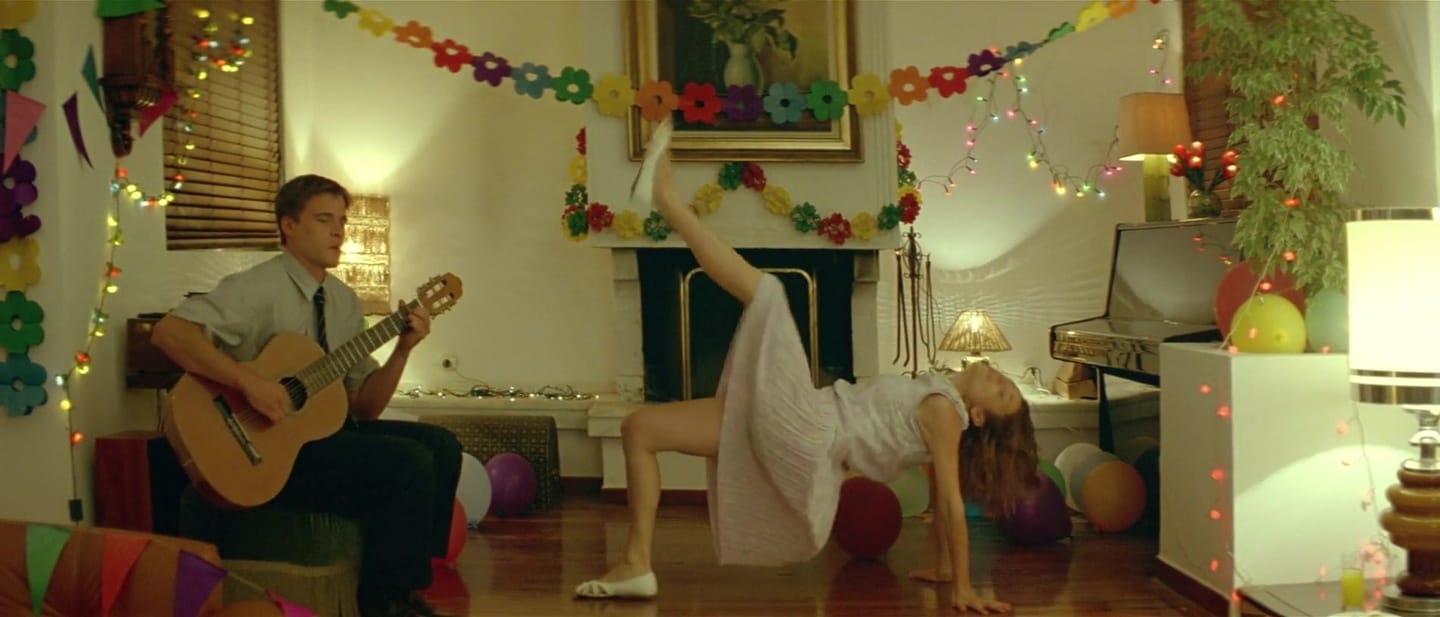
As mentioned, the thematic axis of Dogtooth is the institution of the family, depicted in the film in a pathological stage of domestic terror. It may seem that behind the authoritarian stance of the parents, who drastically limit the freedom of the three children, lies genuine concern and a sense of duty to ensure their safety, as they themselves openly state. However, if there is any uniquely understood protectiveness or parental love here, these motivations have clearly become perverted along the way. The two daughters and the son are practically prisoners in their own home, unaware that life could be different—all information from the outside is carefully muted by the parents, who are the sole distributors of knowledge about the world beyond the property. The only outsider the trio has contact with is Christina, a security worker at the factory where the father works, who is regularly brought in to satisfy the boy’s sexual needs. All three are at least teenagers, physically mature, who according to common standards should be stepping into adult, conscious life—yet their psyche remains at the developmental level of young children, entirely dependent on their parents and functioning without doubt in the precisely defined, sterile conditions of home life controlled by the adults.
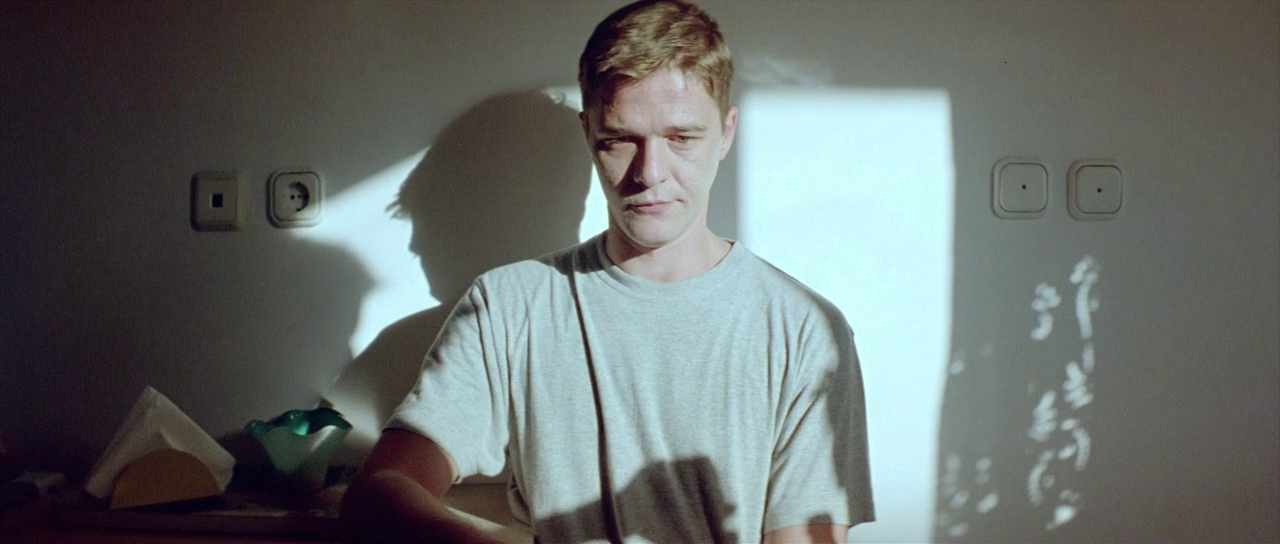
The contrast between the children’s physical maturity and their mental limitations creates a very disturbing effect, clearly highlighting the extent to which the trio is being trained by the parents. At one point in the film, the father visits a dog training facility, where he listens to instructions about the process and techniques of training an animal. Here, a direct analogy emerges to the practices the man implements on his children (and to some extent on his wife). The adults not only arbitrarily implant specific concepts and perceptions of the world into the children’s minds—such as teaching them incorrect meanings of words, blurring cause-and-effect relationships (throwing a toy airplane from behind a bush is presented as a real machine falling from the sky, the mother can give birth to a dog, and the presence of a dogtooth in their teeth prevents life outside the home)—but also literally train them for specific behaviors. In one of the film’s most emblematic scenes, the three children and the mother learn to effectively imitate a dog, supposedly to defend against a murderous beast (a cat)—though in reality, the training manifests and reinforces the father’s power, who literally rules over the other household members.

In this way, Lanthimos reveals the power of the educational role of the family, forming the mental horizon and exerting long-term, multi-level control over individuals. From material dependence, through the shaping of the primary network of concepts and ways of perceiving the world, to modeling behavior according to specific patterns, and finally to the conviction of the naturalness and correctness of such a state of affairs—the family in Dogtooth essentially performs no psychological or physical maneuvers that do not occur within the real functioning of a family environment. The difference lies in the level of intensity and degree of rhetorical use. While recognizing the family as the primary and formative environment shaping an individual for life has a primarily psychological dimension, in Dogtooth, this effect is shown literally as the limitation of the children’s world to an apparently self-sufficient household, and the significance of the “initial” conditions of a person is emphasized through totalization.

Space plays an important role in Lanthimos’s film. The villa reflects the relationships within the family and materializes psychological influence in a manner similar to how physical training visualizes the father’s control over the children’s minds. The neatly clean, bright, and orderly estate is an object strictly subordinated to educational control, contrary to its safe, neutral appearance, proving to be a tool of oppression. The mechanisms of rewards and punishments, implemented by the parents as part of the educational system, find their reflection in the organization of the space, which contains places for play as a reward for obedience, as well as a suggestive artifact of fear—a hedge separating the garden from the outside world. It is said that the lost brother, who left home prematurely and due to lack of adaptation ceased to exist, lives within it. The viewer does not know if the brother is merely a fictional didactic figure or if he truly existed—and if so, what really happened to him. However, the hedge embodying him is for the three siblings an unsettling and fascinating liminal space, accumulating the ominous mystery of the outside world, which is said to threaten them if they disobey their parents. Even the presence of the (silent, after all) hedge supports discipline, serving as an absurd but suggestively tangible testimony to the existence of a threat. Here, the symbolism of the element of living nature integrated into a human-created space is important. It shows the cultural-social taming of nature and its elements through restrictive integration into the human domain.

The same nature characterizes the taming of individuals’ sexuality within the system presented in Dogtooth. Sexuality, as an element of the body controlled by the overseers, is instrumentalized and reduced to emotionless functionality, representing one of the film’s most drastic themes. A clear gender hierarchy is established, where the female body serves to satisfy male needs. This is evident in the soulless copulation of the parents, which serves as relaxation for the father, as well as in the crucial plotline involving Christina, who is hired to relieve the boy’s tension. No one here speaks of emotions, and sex is presented as a utilitarian element of life in the family villa, akin to cleaning or brushing teeth. It also seems that women’s sexual needs are not acknowledged in any way; moreover, when Christina is expelled from the family’s life due to insubordination, the parents, without blinking an eye, decide to assign her role to one of the girls—choosing one who is clearly already favored by the boy.

Sexuality is the second most important theme in Dogtooth. Its drastic integration into the hyperbolic space of the film serves a similar function to the spatial and psychological extremum of the situation of confining the children’s world within the villa, exaggerating existing social patterns marked by structural symbolic and physical violence. Just like all perception and knowledge, sexuality is established as a physiological utility within the family training, introducing another element of shock and highlighting the far-reaching consequences of the hermetically closed initial situation. Again, we encounter exaggeration, revealing the problematic nature of the real functioning of the gender sphere and the impact of upbringing within defined frameworks. However, in Lanthimos’s view, sex catalyzes transgression, driving the older daughter’s rebellion, born from a crack in the informational wall around the villa. The violence committed in the sexual sphere triggers rebellion, despite its naturalization, evoking the victim’s resistance, indicating the existence of feelings beyond the thought structures imposed by upbringing. Thus, Dogtooth introduces elements of breaking familial hegemony and the prospect of escaping patriarchal oppression. The moment the protagonist perceives the prison and attempts to escape also introduces another element of social metaphor in the form of the concept of immaterial enslavement.
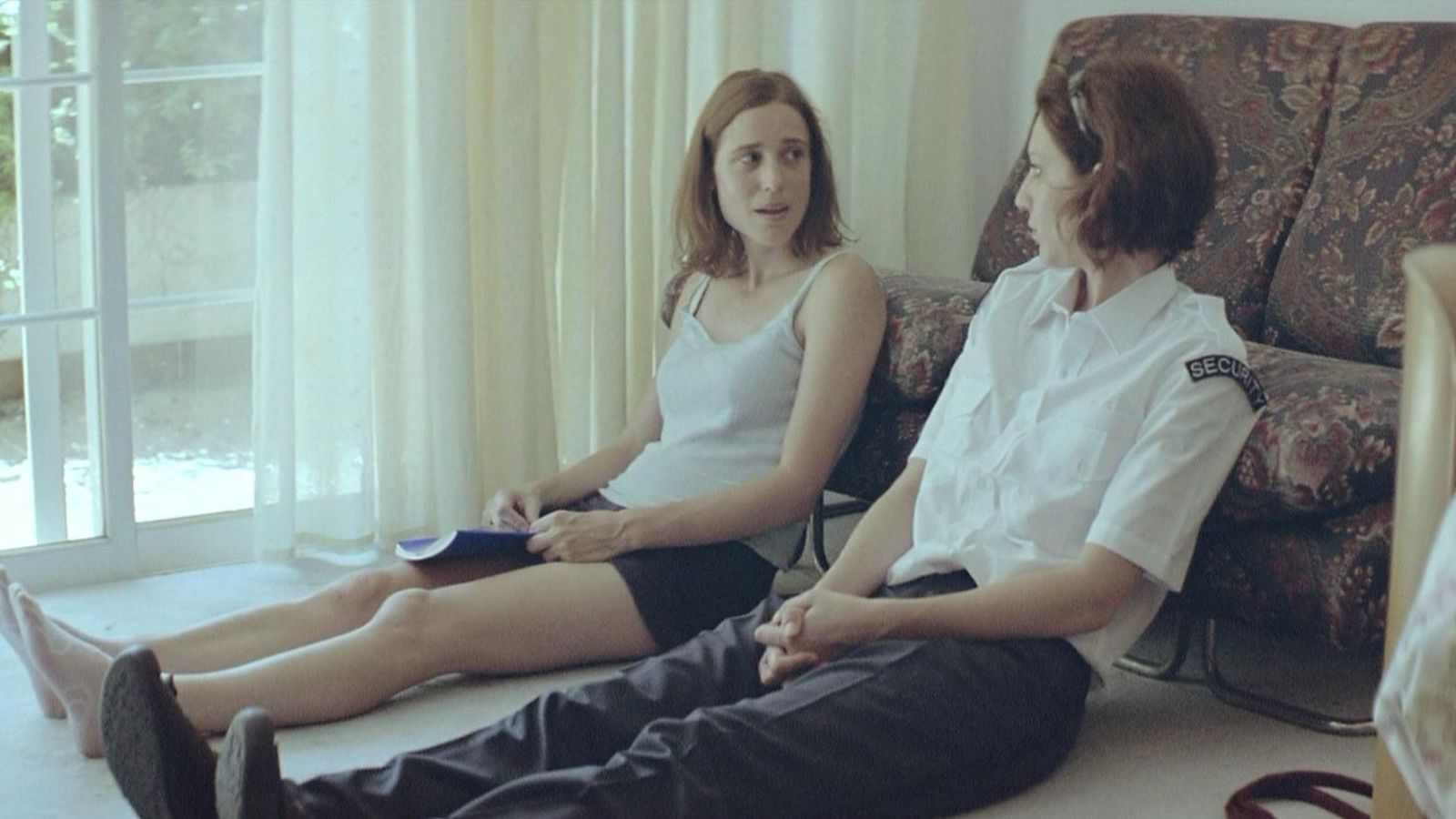
By showing the force of generating cognitive, behavioral, and ontological structures within the family, pointing to the arbitrariness of upbringing and mechanisms of subjugation and objectification of individuals, Dogtooth can be read as a metaphor for socialization mediated by the institution of the family and through it. A family that creates worldview, defines the basis of identity, and implements and naturalizes specific social practices—including patriarchal hierarchy, technological organization of space, and a system of meticulous supervision that subordinates individuality to the structure. The drama unfolding in a sterile estate is, in essence, an exaggerated depiction of mechanisms brought to extremes, in which we participate as members of society. The family here represents “merely” a model of society on a micro scale—this is not a random choice but one dictated by the representativeness and vital role of this social unit in the presented system. In Dogtooth, we see how norms and rules, with a slight shift in emphasis (such as obscuring all other spheres of life with the domestic hearth), can take the form of an authoritarian mechanism of subjugation, where the seemingly natural process of upbringing turns out to be a cruel prison.
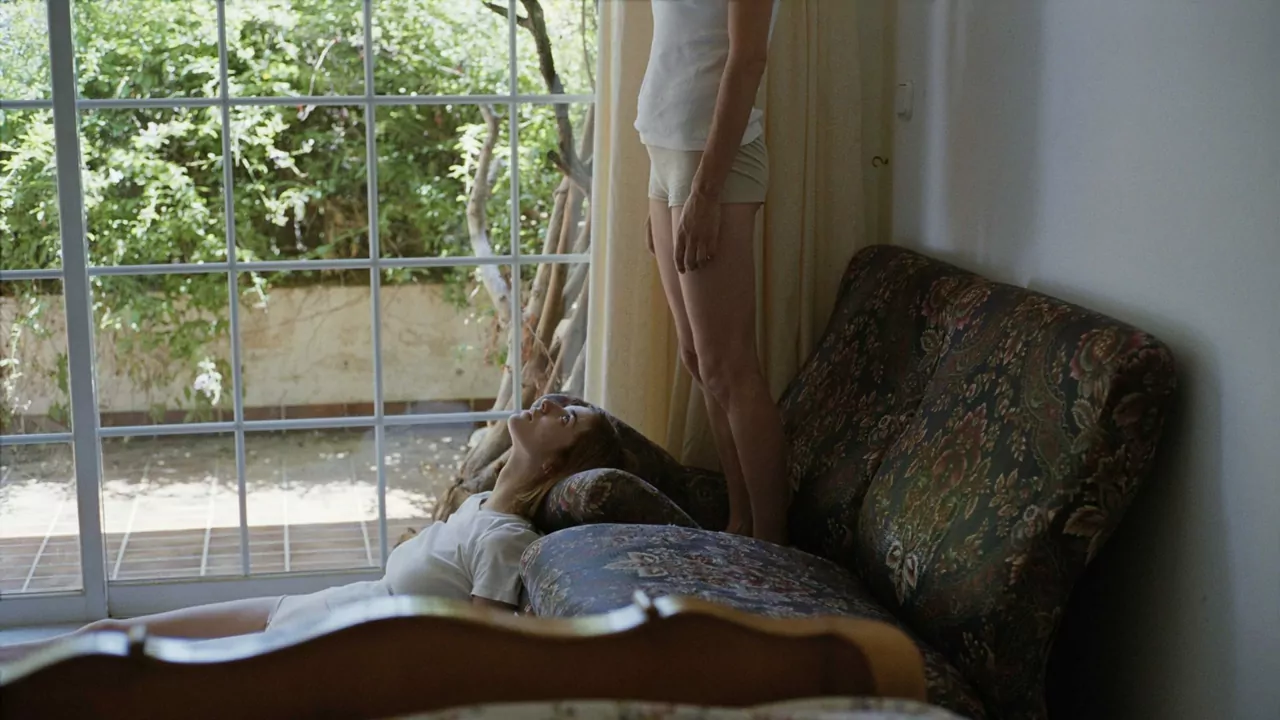
The metaphor of the prison may evoke associations with Michel Foucault‘s concepts. The French philosopher, in the 1960s and 70s, outlined a system of dependencies between knowledge and power, in which the concept of discipline takes on a specific shape. According to Foucault, socialization, especially the education system—which means the planned distribution of knowledge within social groups—creates specific frameworks for reality that allow impersonal control over subdued individuals. Elements of this subjugation (with a highlighted “self” signaling fundamental shaping of the subject) would include indoctrinating culture participants according to a partially arbitrary pattern of concepts and thought schemes, as well as imprinting, for example, through spatial arrangement and the development of body discipline habits. One of the fundamental institutions transmitting this discipline would be the family. The comparison between Dogtooth and the somewhat simplified Foucauldian structure of subjugation encourages seeing in Lanthimos’s film a kind of visualization of theories about an all-encompassing, impersonal system of embodying power. Moreover, the film’s ambivalent ending seems to provide an almost ready model of panopticism—an organizational realization of such perceived discipline.
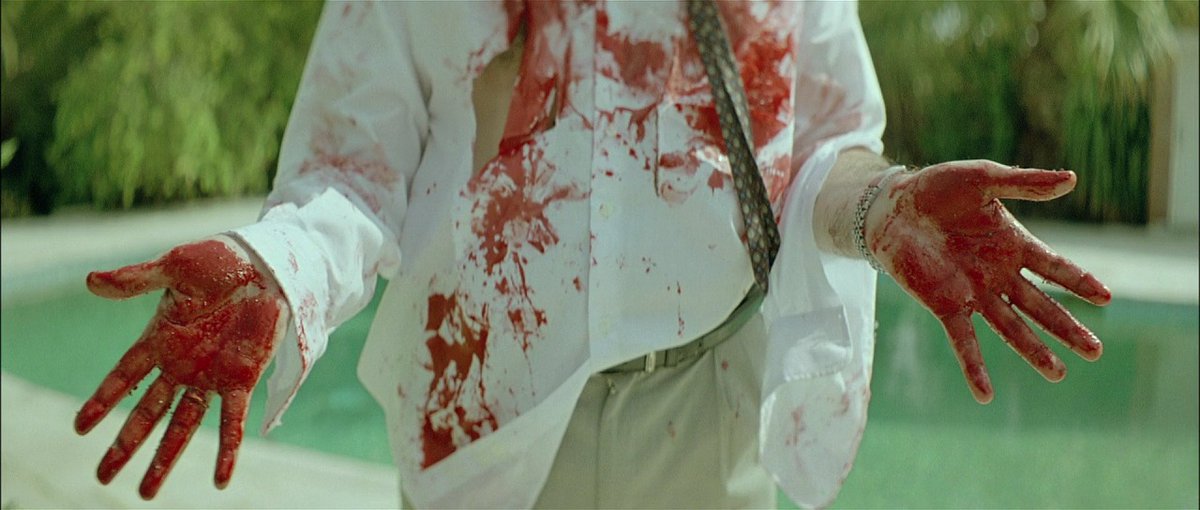
Foucault saw the essence of the mechanisms he described in the concept of the Panopticon, an ideal prison described by Jeremy Bentham. Bentham’s ingenuity lay in constructing a building where one guard could observe all inmates, while none of them could see the rest of the prison or the guard. Foucault metaphorically transferred this architectural project to a social structure based on subjugating and shaping individuals. In his vision, a disciplining society would be a construct similar to the Panopticon—through various social institutions (with the family being a primary one), the citizen is subjected to a kind of training that models behavior according to specific rules, with no individual, visible point of control, no guard overseeing the adherence to the scheme. Impersonal, indirect control thus creates a sense of constant observation and prompts individuals to self-discipline, making the rules a naturalized, integral part of human life. In this situation, Foucault writes, there does not even need to be a guard in the tower; it is enough for the subordinate prisoners to live under the impression that they must adhere to the imposed rules through his intermediary. And this is precisely the situation we see in Dogtooth.
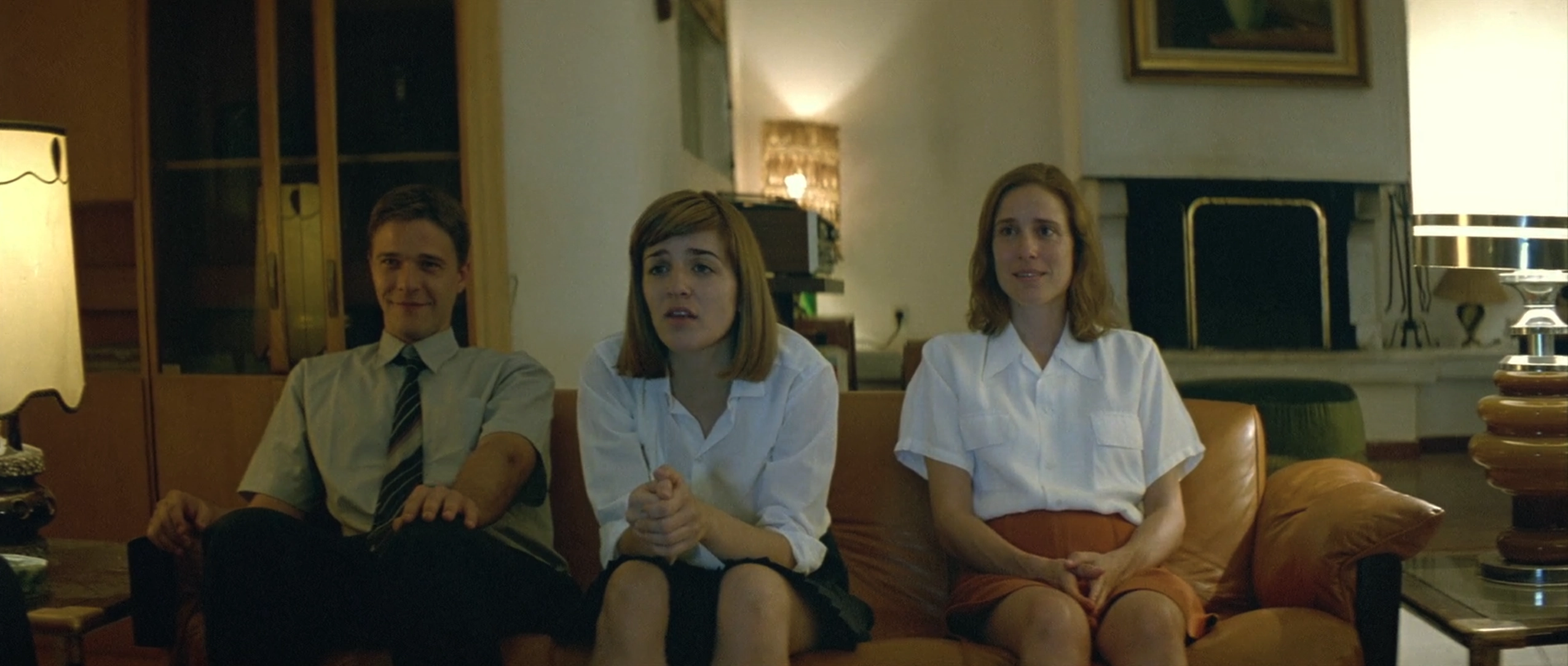
Under the influence of the “leak” from the external world introduced by Christina (in the form of video tapes) the older daughter begins to rebel, starting to feel the stifling corset of familial discipline. The physical assault inflicted upon her completes the process, and the girl decides to break free, to escape. It may seem that the meticulously constructed, terror-based prison will collapse, fail. However, this is illusory—the determined girl herself knocks out the titular tooth and hides in the trunk of a car, which, as she was told, is the only means to leave the estate. The final scene clearly suggests that the protagonist has no idea what to do next—even that she needs to get out of the trunk. This is a moment when we see how deeply the training imposed by the parents reaches and how the prison is internalized by the child, determining her behavior even in moments of rebellion. The protagonist knows only as much as she has been taught.
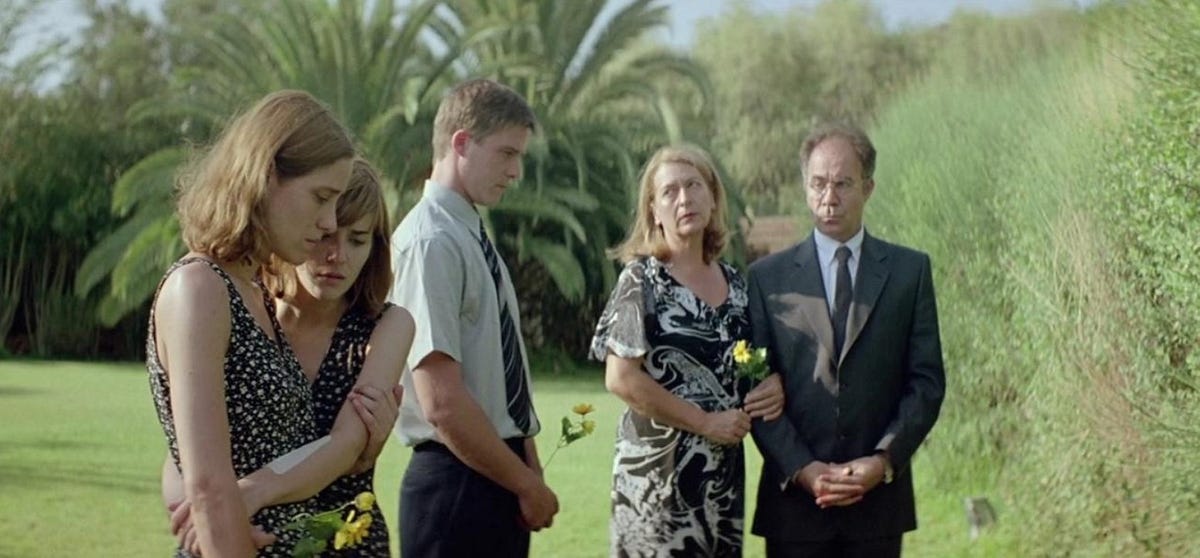
In this context, Dogtooth not only grotesquely highlights the disturbing aspect of social life and the process of upbringing through the family but also indicates that once shaped, we will remain within the imposed rules, whose impact is so profound that it effectively establishes the horizon of thought, action, and change. This perspective may also suggest that, contrary to appearances, it is not the parents or the father himself who are the actual oppressors in Dogtooth—probably the adults are also products of harsh discipline, and their apparent hypocrisy might just be another stage of training in which they now indoctrinate their successors. The prospect of breaking out is merely an illusion, as the protagonists’ mental horizon is conditioned by a situation whose construction prevents manipulation of the system’s foundations.
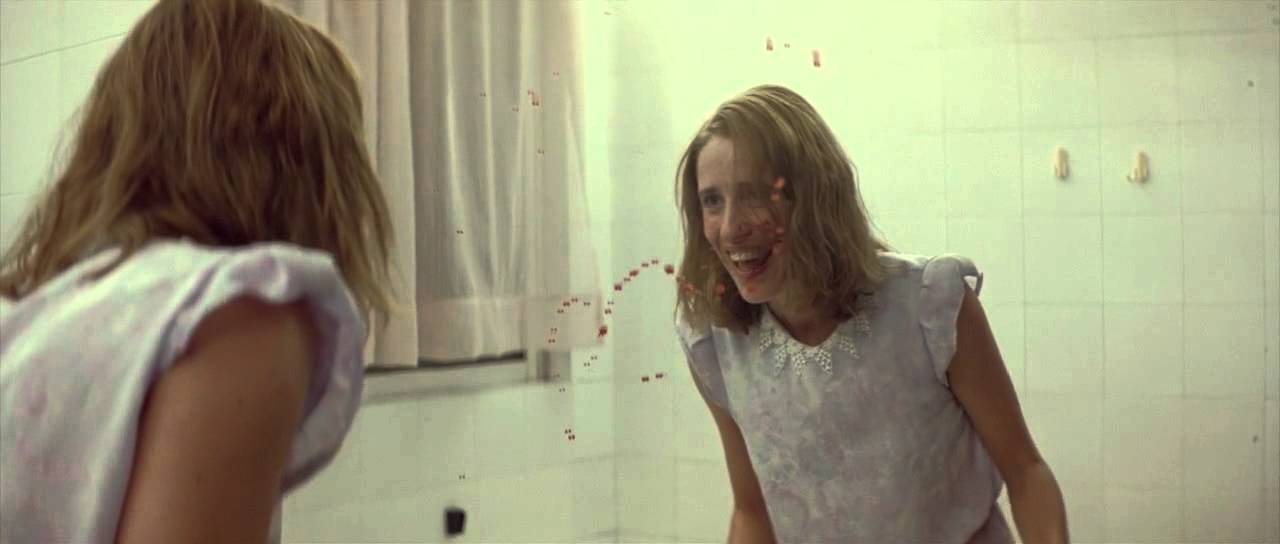
I tend to interpret Dogtooth not as a study of madness but as a distorted mirror in which Yorgos Lanthimos reflects the dynamics of certain institutions and social structures undergoing artistic deconstruction through the film. In this understanding, the Greek film turns out to be a disturbing image of universal mechanisms controlling our lives—the arbitrariness of the knowledge offered to us, the possibilities of manipulating perceptions of reality, and pointing to the profound degree to which the environment, family, and society condition who we are and how we live. The exaggeration here serves to capture what remains a subtle subtext in daily life and is considered the greatest obviousness in a milder form.

